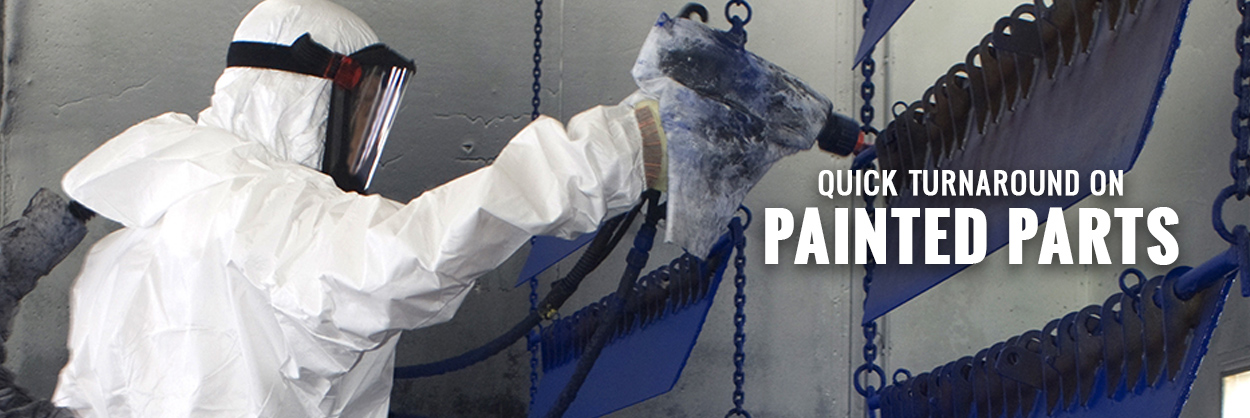We provide single and multi-process painting services for metal materials. We work with our customers to facilitate an optimal design for their project. We handle multiple brands of wet paint to meet our customers’ needs. We are capable of handling larger metal parts with our 16’W x 16’H x 52’L wet paint booth. We can paint even larger pieces inside of our 61,000 square foot facility.
Wet painting may include one, two or three coats.
Primer Coat
The first coat is called the primer. Its purpose is to help improve the adhesion of the topcoat to the surface resulting in a quality, uniform finish that lasts longer. Primer is the first coat of the paint system and should be applied when the surface has never been painted. It also is necessary when painting a surface that has been stripped, is uneven or badly deteriorated, or is worn down to the original substrate. We have a variety of primer options available like shop coat primer, alkyd primers, zinc primers, galvite primers, epoxy primers and others.
While primers are a vital component of the painting process, it is important to use a complete primer and finish system. This is because primers are not intended as topcoats, as they are not designed to hold up to normal wear and tear.
Primers are necessary to fill and seal porous surfaces. They provide a smooth, even surface for the finish coat, especially for enamel topcoats, and make it easier to cover the surface so the topcoat hides imperfections better. By bonding to slick, shiny and other hard-to-paint surfaces, they create a surface to which the topcoat can adhere. Also, primers provide corrosion resistance for metal surfaces, such as iron, steel, aluminum and galvanized metal.
Topcoat Paint
Topcoat paint provides the finish and color desired for the project. There are many options depending on end use of the product. Factors to be considered are exposure to the elements (sun, rain, snow, etc.), traffic usage of the product (hand rail on stair that many people use), the color of the project (high visibility safety yellow), and expected duration of time before repaint is necessary. In most cases, these factors are considered in the design phase of the project by engineers familiar with the expected paint performance.

